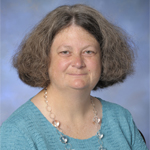November 15, 2010
 Dear colleague, Dear colleague,
I was honored earlier this month to stand before nearly 1,000 fellow actuaries gathered at the American Academy of Actuaries' Annual Meeting and Luncheon and the Casualty Actuarial Society's Annual Meeting to begin my term as the Academy's 46th president. Having served as the 2004 President of the Casualty Actuarial Society, it was especially an honor to accept the Academy's presidential gavel with so many of my CAS colleagues in the audience.
It is also an honor to be part of an event that honored three distinguished actuaries for their service to the profession and to the public interest.
The Academy awarded the 2010 Robert J. Myers Award for Public Service to Sheldon Summers in recognition of his contributions to the public good during his 31 years of service with the California Department of Insurance, including his tenure from 2002 to 2009 as the department's chief actuary.
The Academy for the first time presented two Jarvis Farley Service Awards in a single year. Dan McCarthy, former Academy president and the Academy's first international secretary, received the award posthumously, with his wife and two daughters joining us to honor Dan's memory and legacy. Rowen Bell, who is one of only a handful of health actuaries specializing in financial reporting matters, received the Farley Award in recognition of his service to the profession in the areas of health care reform and financial reporting. Rowen served a term as regular director of the Academy's board of directors from 2006 to 2009 and currently serves as chairperson of the Academy's Financial Reporting Committee and its medical Loss Ratio Regulation Work Group.
I encourage you to visit the Academy website and read more about these three distinguished actuaries and their service and achievements on behalf of the profession (Sheldon Summers, Dan McCarthy, Rowen Bell).
I'm particularly excited to see increasing opportunities for cross-practice collaboration, as exemplified by Rowen Bell's work on the financial aspects of health care reform for both the Risk Management and Financial Reporting and Health Practice councils. Whether it's health and pension actuaries on the subject of retiree health benefits, casualty, life, and risk management actuaries on systemic risk in the domestic and international financial systems, or life and pension actuaries on ensuring lifetime income, collaborative opportunities where we can leverage our collective abilities and work across practice areas will, I believe, only continue to grow in number and opportunity.
One reason this will occur is that the issues we work on today are far more complex, far more intertwined, far more vital to the viability of the financial system, far more essential to the ability of government to meet its obligations … than they were even just a generation or two ago. By bringing together our individual talents, and combining the expertise of all of our practice areas, we maximize the ability of our "small" profession to work on behalf of the public interest.
As I told the luncheon audience, there is something unique and special about the Academy, something I think we tend to overlook at times because we often refer to the American Academy of Actuaries, in shorthand, as simply "the Academy." In our brevity, we forget that this is the one organization that unites all actuaries — regardless of practice area — who practice here in the United States. The American Academy of Actuaries is the one place where we come together, with our individual expertise and experience, and collaborate for the betterment of the profession and the public interest.
While we maintain our focus on serving the public interest, I am keenly aware of interest in ongoing efforts to improve and enhance the Academy's governance, transparency and communications with members. Serving this past year both as chair of strategic planning and as an ex officio member of the Governance Task Force, I gained a significant perspective on how the Academy must continue to evolve and change to meet the needs of its members and continue to fulfill its mission and realize its vision.
The Strategic Planning Committee continues working toward a mid-2011 goal of presenting a revised plan to the Academy's board of directors.
The Governance Task Force, as you may know by now, has delivered a comprehensive report, with specific recommendations, to the Academy Board of Directors. The report is posted on the website — along with an online comment form. As the board prepares to consider each of these recommendations, I hope you'll take the time to read and study the report and share your comments with us.
At the Nov. 8 Annual Meeting, we also premiered a new Academy video, In the Public Interest, which is our latest initiative to utilize new media to improve the way we communicate with members and the external audiences we serve and with whom we work. Look for many more video offerings from the Academy in 2011.
Over the past year, the Academy has made strides in governance and transparency, in engaging our members, in expanding the breadth and depth of our public policy work, and in supporting the profession. Progress should and must continue. During the next year, I will work with president-elect Dave Sandberg, the Academy's officers and board members, committee chairs, and other volunteers to continue our important work.
I indeed am grateful for this opportunity to serve the Academy and the profession and I look forward to collaborating with many of you as we work together, to serve both the U.S. profession and the public interest.
Sincerely,

Mary Frances Miller
President
American Academy of Actuaries
PS: You can stay informed of our activities and publications by regularly checking the Academy website and subscribing to our Twitter feed. And, as always, you can give us your feedback by emailing communications@actuary.org.
|

 Dear colleague,
Dear colleague,